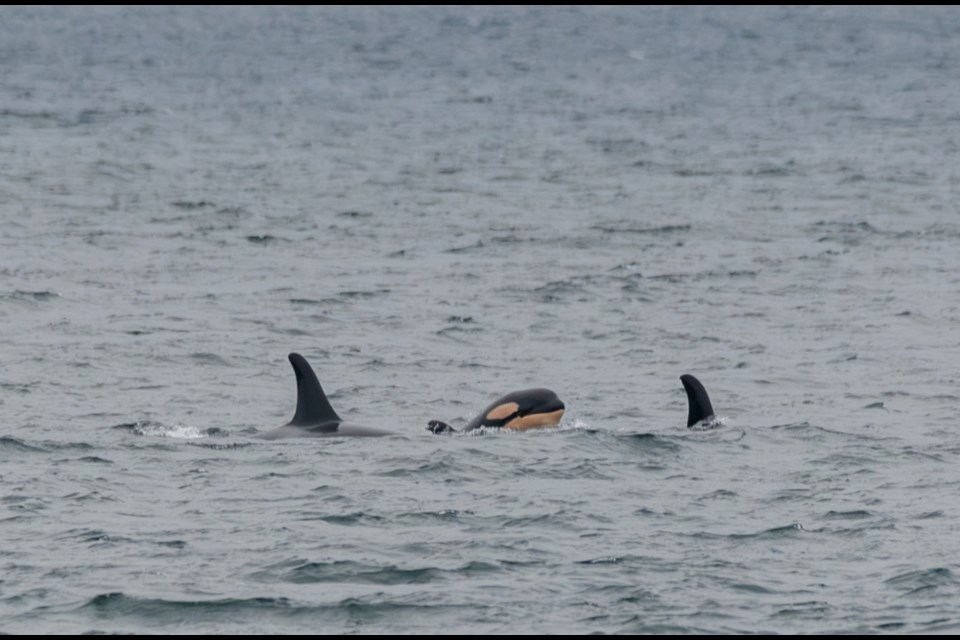The newest member of the A42 pod of northern resident killer whales made an appearance at a Sechelt beach last week, but the researchers conducting the Salish Sea winter study have yet to encounter them this year.
The calf is young, and has not been given a number by Fisheries and Oceans Canada yet, as far as Ocean Wise researcher Gary Sutton knows. Sutton told Coast Reporter the calf has been associated with A79, a 20-year-old female also known as Current. Her first offspring, A119 (also known as Venture), was born in 2018. Sutton said it’s nice to see her growing her family and that this new addition “softens the blow of losing her brother, A66” who was last seen in January 2023 in poor condition. A sighting of A66 has not been reported since, and he is likely deceased.
“It’s nice to see the little one being born, and spending hopefully many more years on the Sunshine Coast, rubbing on beaches,” Sutton said.
Coasters noticed the A42 pod seems to be arriving to rub on beaches in Sechelt annually in January. “It’s funny,” Sutton said, “Sometimes you think they’re following a calendar. They have these built-in rituals. It’s not just residents, Bigg's killer whales as well, we have certain matrilines that show up within the same week every year in the same area. So they definitely have their routines and they like to stick to them.”
Sutton said their routines are affected by prey availability, “so if the animals are showing up the same time every year in the same spot, I’d like to think that’s a good sign. Something’s bringing them back. Hopefully that means they’re finding food.”
When asked about the value or concerns about sharing information about whale sightings with the public, Sutton said sharing sightings in real time can be detrimental, especially in the summer months, because it does increase boating traffic around the animals. But this time of year there’s not high traffic in this area.
Reporting sightings to Ocean Wise’s free WhaleReport app helps provide information to its historical database that can be used by scientists and citizen scientists to compare to years past. Those reports are also used to send an alert to shipping traffic in the area to notify them of whales so they can take mitigating measures.
“We live in the information era… providing that data regardless to ongoing research efforts is definitely beneficial for the animals,” Sutton said. “Even to say the A42s are off the Sunshine Coast most years on January 23 [for example], for someone to go out there on their boat and actually find them requires quite an amount of luck.”


